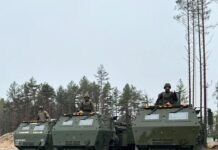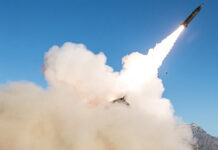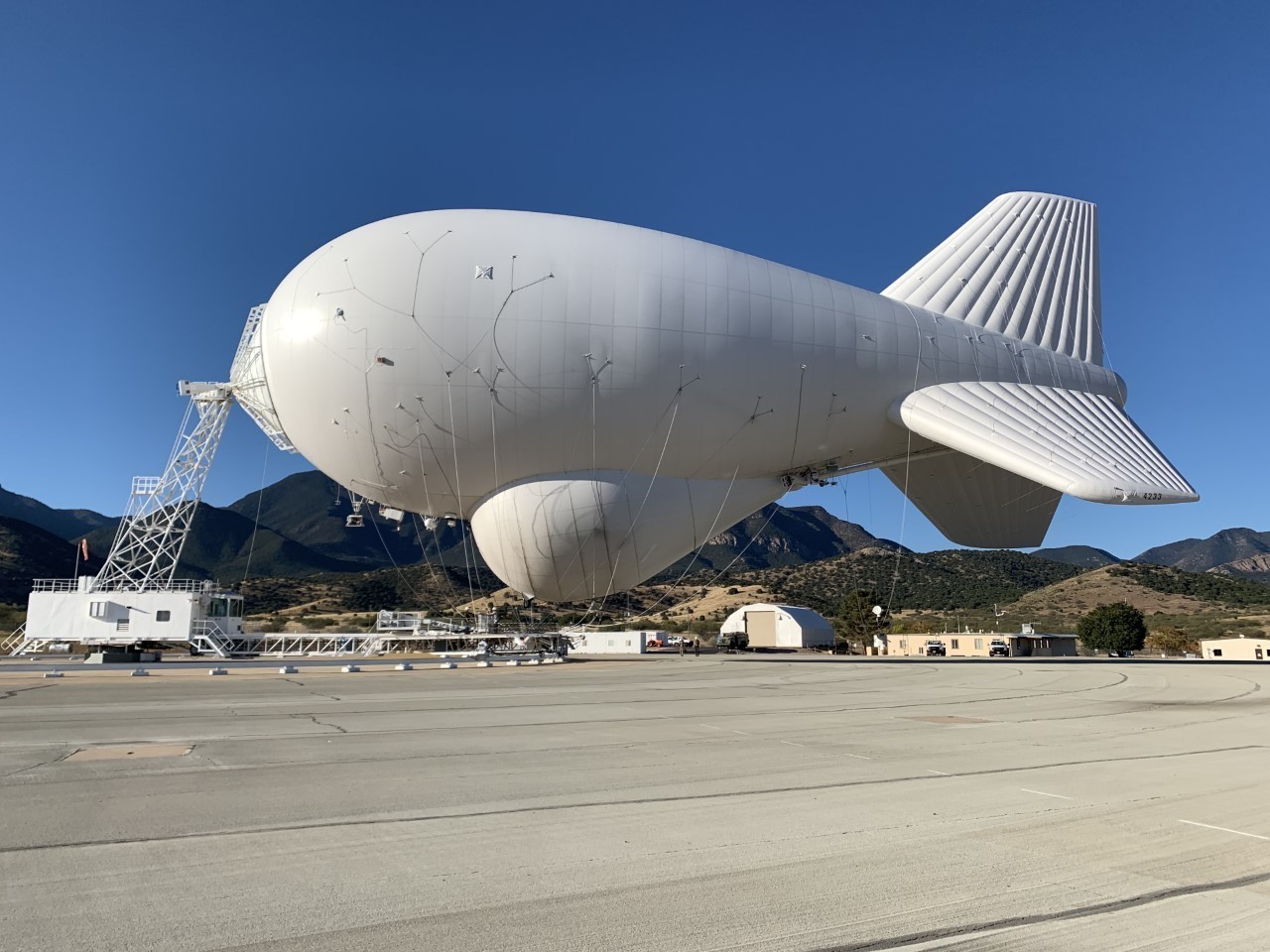
Sensor, Shooter, Jammer – The Future of Intelligence, Surveillance, and Reconnaissance in the Urban Battlespace
John Antal
Urban warfare is today and tomorrow’s war. The most significant wars in the past three years were fought in urban areas and are the harbingers of battles to come.
Azerbaijan fought Armenian forces in the Second Nagorno-Karabakh War, from 27 September to 10 November 2020, and clinched a military victory when Azerbaijani special forces and light infantry, supported by artillery and drones, conducted a successful infiltration attack to seize the city of Shusha, which is the decisive terrain in Nagorno-Karabakh. The Israel-Hamas War, during 11-21 May 2021, is an exemplar of how to wage modern urban combat as it was fought in the city of Gaza and the tunnels beneath the city.
Gaza has an estimated population of 750,000 and the World Population Review website named it as one of the most densely populated cities on earth. Russia’s invasion of Ukraine on 24 February 2022, which kicked-off the on-going Russian-Ukrainian War, has been fought over cities, towns, and villages. Battles such as the siege of Mariupol, where outnumbered and outgunned Ukrainian soldiers defended the city from 24 February until their final holdouts in the Azovstal plant surrendered on 20 May 2022, is just one example of urban combat in modern war. As military leaders and systems designers survey these conflicts, the pressing need to study, train, equip, and prepare for urban warfare is obvious and urgent.

Credit: Elbit Systems
A thorough study of urban operations in the Russian-Ukrainian War reveals that conducting a siege of large city, such as Mariupol, which took the Russians 86 days for 14,000 troops, with artillery and airpower, to defeat a defending force of roughly 4,500 Ukrainians, is difficult and usually involves destroying the city and starving the population, a course of action that most Western nations would not accept. The other option, to assault a defended city is a confusing and bloody affair, such as we saw in Kyiv in February 2022, and devours military power at a ferocious rate. Few armies other than the Russian Army and the Chinese communist People’s Liberation Army have the manpower or the intentions to wage urban combat the old way. Winning the city fight in the 21st century requires new thinking, but most importantly it requires effective Intelligence Surveillance and Reconnaissance (ISR) that can be used to locate targets for sensors, shooters, and jammers.
Not Just Sensors, but Sense-and-Strike
ISR sensors work best in open terrain. Buildings and reinforced concrete structures inhibit line-of-sight sensors in urban settings. Several new technologies will improve the capabilities of sensor systems to overcome this in urban settings. The traditional kill chain, using separate sensor and shooter systems, involves a time lag that allows the target to evade the strike. In each of the three wars mentioned earlier, the time lag in the kill chain decreased the effectiveness of kinetic strikes. To decrease this lag, ‘sensor-to-shooter’ systems have been developed, which allow a user to rapidly characterise a target as legitimate, and then strike it using a range of possible assets. These can shorten the kill chain to a matter of seconds. Further efforts to shorten of the kill chain have led to combining the sensor and the effector into a single package.
Israeli technology companies have shown themselves to be frontrunners in developing robotic systems and loitering munitions. The Israeli-made Harop and Orbiter loitering munitions, for example, played a critical role in Azerbaijan’s 44-Day decisive victory in the Second Nagorno-Karabakh War. Israel-based defence company Elbit Systems is building upon this experience by creating networked, autonomous robots to dominate the battlespace.
Elbit’s Legion-X system connects multi-domain robotic sensors of all types into one networked swarm. According to Elbit, “Legion-X is an autonomous networked combat solution based on robotic platforms and heterogeneous swarms…Legion-X provides an advantage in peer/near peer adversary combat scenarios, enabling coordinated deployment of swarms of connected, heterogeneous autonomous platforms and payloads.”
The Legion-X network creates ‘one-to-many’ control (one operator controlling dozens of systems) of air and land robotic weapons. A Wireless Local Area Network (Wi-Fi) is used to exchange voice, data and streaming video. In areas where there is no Wi-Fi, Elbit’s broadband tactical data communications network can provide Software Defined Radio (SDR) networking through land or air systems. For added resiliency, the network covers all NATO mobile Frequency bands and does not rely on the Global Positioning System (GPS).
A key element of the Legion-X concept is the LANIUS loitering munition built for urban combat. LANIUS is a beyond line of sight (BLOS) loitering munition with the ability to sense-and-strike autonomously. The system communicates to other connected systems in the network through Wi-Fi or SDR network. Onboard computing and Artificial Intelligence (AI) helps LANIUS avoid collisions with other objects and conducts simultaneous localisation and mapping of its environment. LANIUS is a short-range weapon with a 7-minute flight time that can carry lethal or non-lethal payloads, fly as fast as 20 m/s or hover in one place. The mini-drones can also be launched from a larger, longer-range, drone mothership. To clear buildings, a dozen LANIUS mini drones, armed with high explosive warheads, can autonomously launch from the mothership and search and destroy targets. In future city fighting, soldiers will likely use drones such as LANIUS, in the same manner as grenades were used in WWII room clearing operations, only these smart drones will provide real time video of what is in the building as well as delivering explosive effects.
Swarm ISR and Strike
Every combat action involves finding the enemy and then striking them. No matter how advanced the weapons, putting human warfighters in harm’s way in a city fight is a recipe for casualties. As the fighting in Ukraine’s urban areas demonstrates, a city represents a complex battlespace that is dangerous to navigate and difficult to conquer. Urban terrain offers the defending force concealment, hardened positions and the opportunity to ambush in every building and along every road. In the ongoing Russian-Ukrainian War, the Russians have demolished large sectors of towns and cities with various forms of artillery before sending in their troops. New thinking is required to avoid this scenario and the US Defense Advanced Research Projects Agency (DARPA) is hard at work to provide a solution.
DARPA is determined to develop and leverage AI to enhance military robotic systems for urban ISR and combat operations. The Deputy Director of DARPA’s Information Innovation Office, Dr. Matt Turek, announced in March 2021, at a Defense Readiness Workshop, that AI is essential to over 120 of DARPA’s most important programs. Turek added that DARPA is developing an ‘Explainable AI’ program, XAI, to enable “third-wave AI systems, where machines understand the context and environment in which they operate, and over time build underlying explanatory models that allow them to characterise real world phenomena.” This will create AI-enabled systems that learn their environment to perform a variety of missions. Third-wave AI allows computers to become capable partners, rather than just tools, with human warfighters. An example of human-machine partnering was demonstrated in February 2023 with DARPA’s Air Combat Evolution program, which enabled an F-16 Fighting Falcon aircraft to operate independently with AI. The aircraft, renamed as the X-62A or VISTA (Variable In-flight Simulator Test Aircraft), flew several flights under AI control. Such AI will empower an unmanned aircraft to fly as a “loyal wingman” for manned aircraft. When used with loitering munitions, the AI will enhance autonomous and collaborative drone swarming. These tests have placed networked autonomous drones as a top priority for US Air Force funding and development.

DARPA’s OFFensive Swarm-Enabled Tactics (OFFSET) program addresses the ISR and strike problem for the urban battle using drone swarms. The DARPA website states that the OFFSET program “envisions future small-unit infantry forces using swarms comprising upwards of 250 unmanned aircraft systems (UASs) and/or unmanned ground systems (UGSs) to accomplish diverse missions in complex urban environments. By leveraging and combining emerging technologies in swarm autonomy and human-swarm teaming, the program seeks to enable rapid development and deployment of breakthrough capabilities.”
The concept combines collaborative, networked UAV swarms and UGS with soldiers to provide an unparalleled sense-and-strike ability for the urban fight. Swarms of drones will act as both sensors and shooters, isolate buildings or areas in the urban battlespace and conduct urban raids. Instead of swarming soldiers into a city and accepting the heavy human casualties that this would entail, future city fights will swarm with flying and rolling robotic systems. In short, the use of networked, autonomous unmanned systems, employed in swarms, will change the methods of war.
Dominating the Sky and Stratosphere
Real time situational awareness is a force multiplier in a city fight and ISR drones are a basic tool in every modern military force today. Inexpensive, disposable small Unmanned Aerial Vehicles (sUAVs) are available to anyone with a few thousand dollars. Nearly every nation manufactures drones, with the most expensive and capable systems manufactured by China, the US, Europe, Israel, Turkey and Iran. China is a drone superpower as it manufactures 80% of the commercial drones sold world-wide, with most of these being sUAVs. One Chinese company alone, Shenzhen, China based DJI Sciences and Technologies, produces 70% of the world’s consumer drones. DJI drones have been used with great effect in the Russian-Ukrainian War, comprising most of the sUAVs used by Ukraine’s Aerorozvidka (Ukrainian: Аеророзвідка, “aerial reconnaissance”). Aerorozvidka is a unit of Ukrainian Army drone operators who were drone hobbyists before the war, but have now become expert drone pilots.
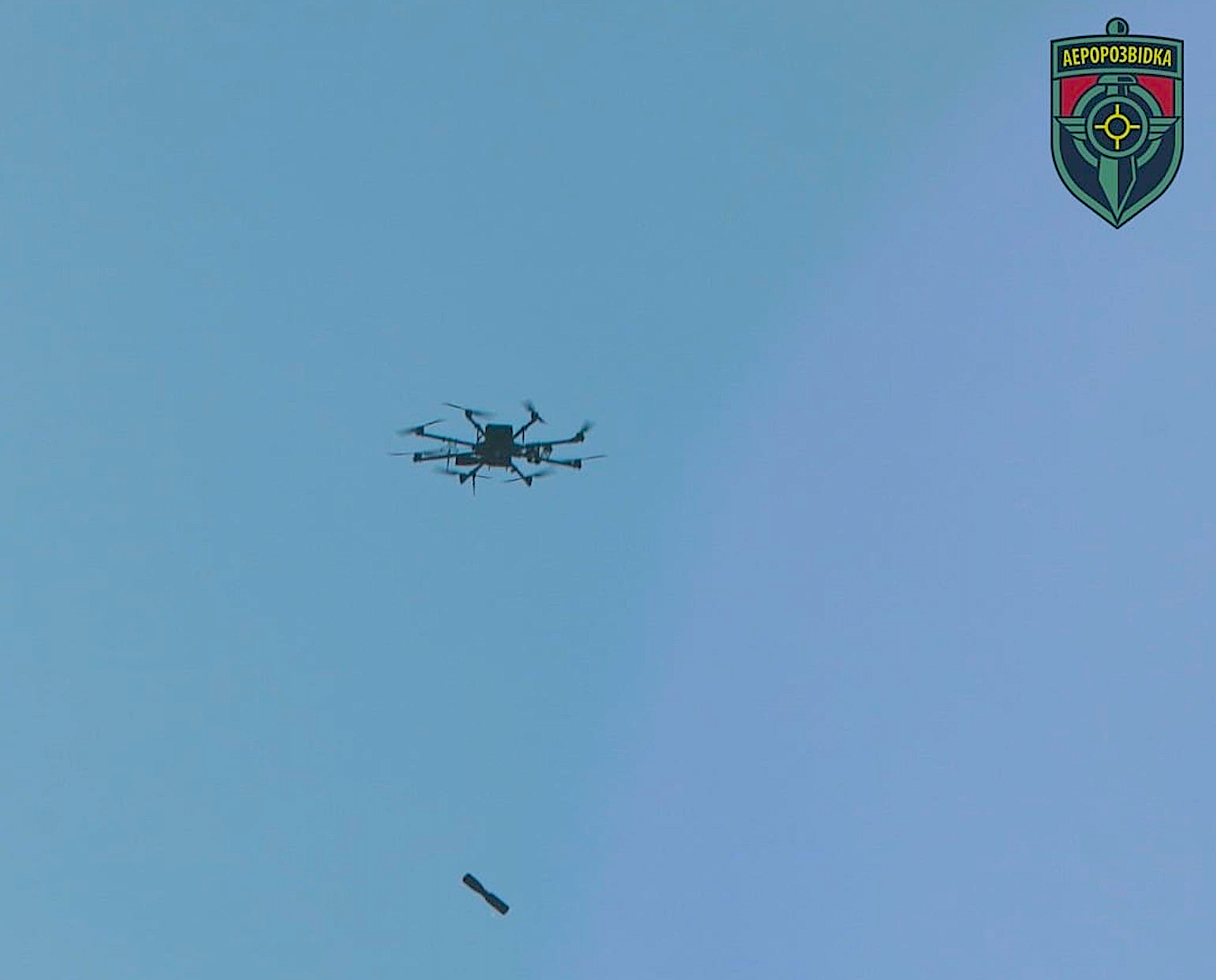
Drones offer military capability at low cost. Small quadcopter drones with costs ranging from hundreds to a couple of thousand dollars can be used to see city blocks and can manoeuvre inside buildings, but observing the city battlespace from high and medium altitudes is also necessary to fight in cities. Systems operating from a higher altitude provide a means to unmask enemy forces that are not inside buildings or hiding underground. Manned aircraft can provide medium and high-altitude ISR, but in high-threat environments this mission is accomplished by High Altitude Long Endurance (HALE) and Medium Altitude Long Endurance (MALE) UAVs. Medium and high altitude ISR, however, are not enough when contemplating urban combat in a large city or megalopolis. Persistent ISR is needed. To provide persistent ISR, a multi-layered strategy is required that includes a space layer that uses satellites, a stratosphere layer, and a mid-to-high atmosphere layer.
Satellites in orbit around the Earth, either in geostationary orbits or Low Earth Orbit (LEO), provide ISR from space. Manned aircraft, as well as MALE and HALE UAVs provide atmospheric coverage. The gap appears to be in the second layer, the stratosphere, that extends from 7-20 km (depending on latitude) to approximately 50 km above sea level.
To breach this gap, the US Army has been experimenting with unmanned stratospheric ISR systems. Craft operating from the stratosphere can take high-resolution images, transmit and relay communications with relatively low latency, accelerate video-feed and data processing, provide early warning of enemy threats, and can jam an enemy’s radar and communications systems, better than satellites in space. These capabilities will be essential for combat operations in a major city. In 2021 the US military emphasised their interest in the stratosphere when US Central Command (CENTCOM) and the US Navy’s Surface Warfare Center (NSWC) published a Request for Solutions (RFS) using stratospheric balloons and solar-powered glider UAVs. Tests conducted over the last five years have focused on operationalising the stratosphere for persistent operations in non-permissive environments.
One effort to gain a foothold in the stratosphere is the development of a stratospheric high altitude UAV call the Zephyr, manufactured by Europe’s Airbus, and designed by QinetiQ, a UK company. Airbus calls the Zephyr a ‘Solar High Altitude Pseudo Satellite’ (SHAP-S) that can launch on demand from almost anywhere. Zephyr-8 is one of the latest models of this ultra-lightweight carbon-fibre unmanned aircraft being tested the US Army. It weighs less than 75 kg and has a wingspan of up to 25 m. The wings and tail surfaces are large solar panels that power the aircraft for daytime operation and charge the lithium-sulphur batteries for night-time operation. The Zephyr is so light that six to eight people can carry it for launching as its two propeller-driven engines lift it into the air.
The US Army’s Zephyr-8 prototype flew over the southern United States, the Gulf of Mexico, and South America, at 18,288 m (60,000 ft) for 64 days in the summer of 2022, until it crashed in the Arizona desert on 8 August 2022. The US Army did not reveal the precise reason for the crash other than the Zephyr experiencing “events that led to its unexpected termination.” Australia also purchased a Zephyr and it crashed on 28 September 2019, when it ascended to 2,438 m (8,000 ft), executed a series of uncontrolled turns, but was disabled by air turbulence, spiralled downward, and broke up during descent. The official reason for the crash was determined to be unstable atmospheric conditions. From 28 January to 4 February 2023, the infamous Chinese Spy Balloon traversed much of the US, before being shot down off the coast of South Carolina. This incident emphasised the military use of the stratosphere. Future urban operations will include, not just dominating the air with traditional air superiority, but also dominating the stratosphere.

Placing sensors and jammers in the stratosphere is a growing military requirement. In most military operations a ‘Hi-Lo’ mix, combining expensive high-end systems with less-expensive but capable low-end systems provides a battle-winning balance. Balloons can be part of a ‘Hi-Lo’ solution for urban operations and can be configured to support swarms of unmanned vehicles with Wi-Fi connectivity, to network the drones in dead spaces such as urban canyons. This type of ‘Hi-Lo’ mix provides redundancy, resiliency and is less expensive than flying manned or HALE and MALE unmanned systems. The latest Lighter Than Air (LTA) systems can carry large and sophisticated ISR and communications packages to provide persistent surveillance, network connectivity, and electronic warfare (EW) support over a city. Military LTA craft, called Aerostats, can operate in the stratosphere to provide ISR for Counter – Unmanned Aerial Vehicle (C-UAV) defence.
Aerostats can be either tethered or free-flying. These high-flying balloons operate above the altitude of aircraft but below the altitude of satellites, from 18,288 m (60,000 ft) to 30,480 m (100,000 ft) above the ground. One of the leading defence firms involved in military aerostats is the American defence corporation Lockheed Martin. The company was involved in military balloons with the US Navy before WWII, and its latest models, are not your grandfather’s blimp. The US has used tethered tactical aerostats at lower altitudes, for surveillance along the southern US border to combat drug trafficking. Since 2013, the Lockheed Martin 420K Aerostat System was the only ISR and communications balloon in daily use in the US until the Biden administration cut off funding and decided to ground them in late 2023. Another Lockheed Martin tactical aerostat model, specifically designed for military persistent surveillance and communications at lower altitudes, is the Lockheed Martin 74K Aerostat. The craft is 35 m long and is tethered with a fibre optic transmission cable. It can carry a payload of 500 kg.
Higher-flying craft can provide a significant wide area surveillance and communications advantages for urban combat operations. Lockheed Martin’s High Altitude Airship (HAA) can operate in the stratosphere and provides the ability for unmanned persistent and sustained geostationary ISR, EW, and communications over a city. Due to the typical altitudes it operates at, it is impossible to shoot down with most Short-Range Air Defence (SHORAD) systems. No tether is required as the HAA can manoeuvre in the airspace, directed from a ground station or satellite relay. The usual payload for aerostats includes a surveillance radar, inertial navigation system, thermal imaging and day cameras, and an electronic intelligence and communication intelligence package. Although the US has not armed its balloons, and has no intention to do so, other countries may not be as hesitant. Armed aerostats operating in the stratosphere could become weapons platforms to conduct precision bombardment.
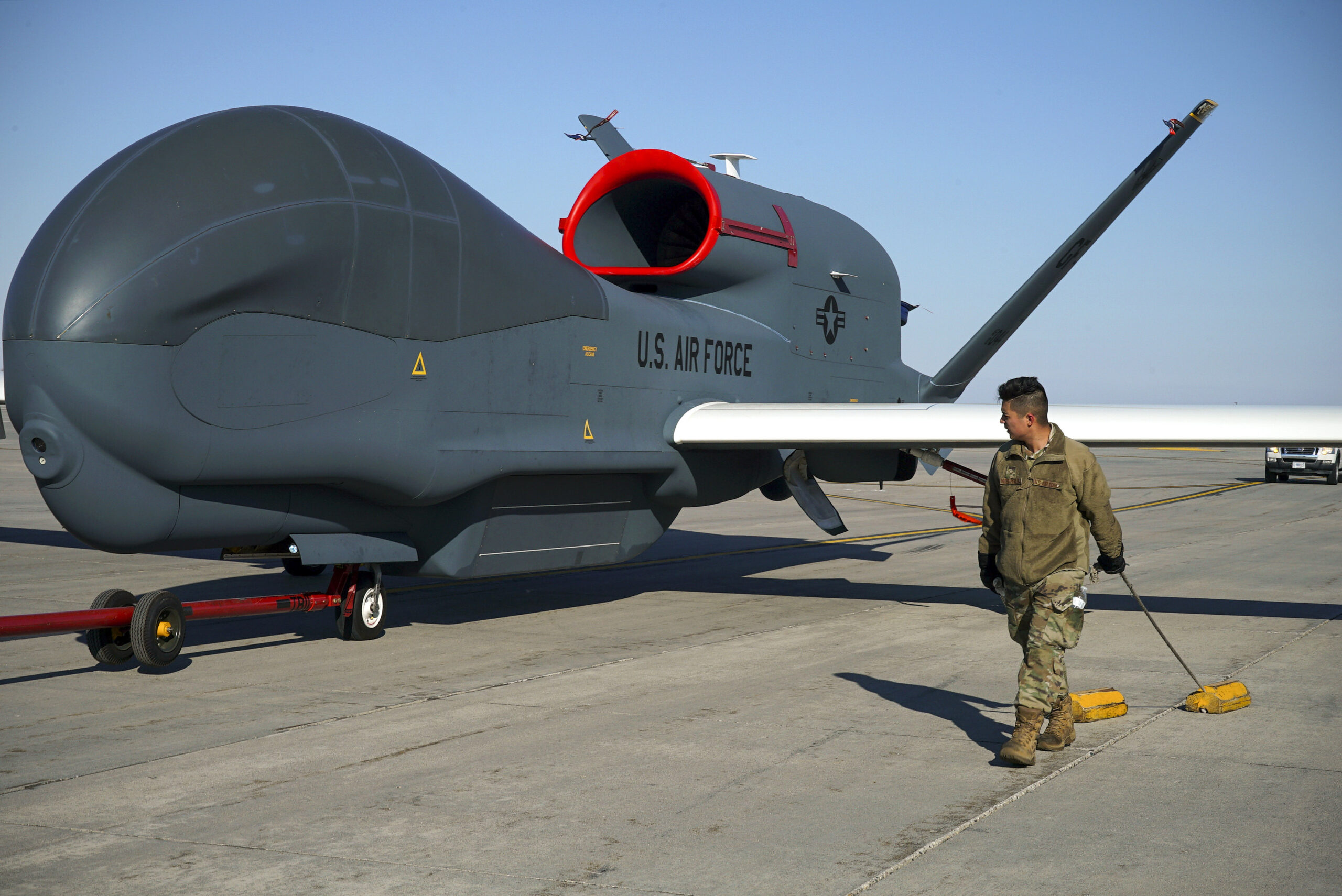
Credit: USAF/Senior Airman Elora J. McCutcheon
ISR and Strike for the Next Urban Battle
The world is getting more dangerous. The likelihood of a great power war appears to be rising, with the possibility of multiple major wars breaking out at the same time. Fighting in towns and cities is the primary setting for combat in the current Russian-Ukrainian War and the primary lesson from this fighting is that urban combat cannot be avoided. If China were to invade Taiwan, most of the combat would likely occur in an urban battlespace. As much as we wish to avoid battles in cities, it is unlikely, and we must prepare, train and equip to do so. Technology cannot address the challenge of urban combat alone, but it offers an alternative to the bloody fighting playing out in Ukraine.
The future of ISR in the urban battlespace will be characterised by swarming-capable sense-and-strike systems, and means for domination of the airspace and stratosphere above a city. Platforms that provide highly precise multi-domain ISR at safe ranges will improve the network, provide a means to jam enemy systems, and enable drone operations to win the city fight. AI, microminiaturisation, and autonomous unmanned systems are driving these changes in warfare.
In the next decade, military forces will transform from fighting as a network of independent capabilities, as we fight now, to a swarm of systems. In a 2014 study titled “Robotics on the Battlefield Part II the Coming Swarms” by Paul Scharre, the author predicted: “Emerging robotic technologies will allow tomorrow’s forces to fight as a swarm, with greater mass, coordination, intelligence and speed than today’s networked forces. Low-cost uninhabited systems can be built in large numbers, ‘flooding the zone’ and overwhelming enemy defences by their sheer numbers. Networked, cooperative autonomous systems will be capable of true swarming – cooperative behaviour among distributed elements that gives rise to a coherent, intelligent whole.”
In urban combat, these unmanned systems will provide the mass, reconnaissance and strike abilities that are required to win an urban fight without excessive human casualties. As military forces deploy swarms of networked drones, these will provide ubiquitous ISR and strike capabilities. Dominance in war will soon belong to swarms of networked robotic platforms that can sense, strike, and jam enemy forces autonomously. These weapons will not be inexpensive, but in the next war they will ignite a transformation as significant as the machine gun and the tank did the 20th century. To adapt to these changing methods of warfare, we must think differently and act in time.
John Antal





![Air-to-ground precision munitions: A market overview A SPEAR 3 test missile strikes its target during the first live fire test on 17 November 2024. [Crown Copyright 2024]](https://euro-sd.com/wp-content/uploads/2025/06/SPEAR_mini-cruise_missile_first_guided_firing__MBDA_2-Kopie-218x150.jpg)

